
Fundamentals
The vitality of our hair stems from the sanctuary it calls home ❉ the scalp. Understanding the Textured Hair Scalp Health is a journey into the fundamental requirements for cultivating robust hair strands, particularly those with intricate curl patterns. At its very basic, this concept signifies a state of optimal well-being for the skin and follicles resting atop the head, providing an ideal environment for hair growth and retention. It is an explanation of the essential conditions that permit textured hair, whether coiled, kinky, or wavy, to flourish in its innate splendor.
For individuals with textured hair, the scalp’s health is intrinsically linked to the distinct biological characteristics of their hair. These curl patterns, often more susceptible to dryness and breakage, necessitate a mindful approach to scalp care. The designation of ‘health’ here encompasses a harmonious balance of moisture, a clean surface free from irritation or build-up, and an active ecosystem of beneficial microorganisms. This foundational interpretation recognizes that a healthy scalp is the bedrock upon which the beauty and strength of textured hair are built.
A vibrant scalp forms the bedrock for thriving textured hair, a concept deeply interwoven with ancestral care practices.
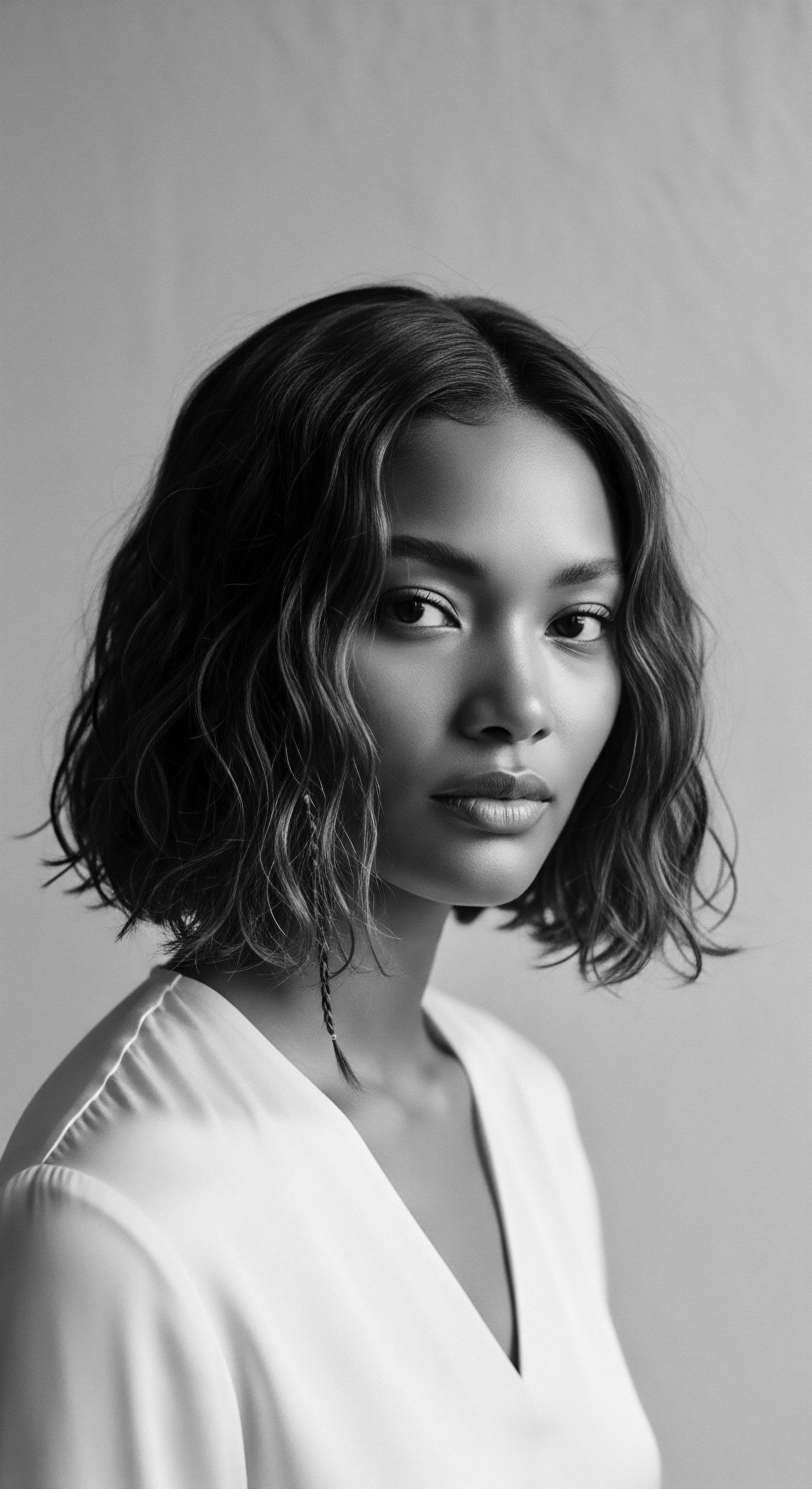
Elemental Considerations for Scalp Well-Being
When we consider the elementary aspects of Textured Hair Scalp Health, several elements emerge. The scalp’s skin, much like the skin on other parts of the body, requires proper cleansing to remove impurities, excess oils, and product residue. Yet, for textured hair, this cleansing must occur with a gentle hand, avoiding harsh chemicals that strip natural moisture. Moreover, adequate hydration is paramount, as the inherent structure of textured hair can make it more prone to dehydration, a condition that often extends to the scalp itself.
- Moisture Balance ❉ A healthy scalp maintains an optimal level of hydration, preventing both excessive dryness and oiliness.
- Cleanliness ❉ Proper removal of dead skin cells, product build-up, and environmental pollutants is essential for scalp vitality.
- Circulation ❉ Gentle massage can promote blood flow, supporting nutrient delivery to the hair follicles and aiding Textured Hair Scalp Health.
- Absence of Irritation ❉ A calm, uninflamed scalp without itching, flaking, or redness signals a state of well-being.
The earliest forms of care for textured hair, passed through generations, implicitly understood these foundational principles. Ancestral practices often involved the use of natural oils and botanicals, which simultaneously cleansed gently and provided crucial moisture, laying the groundwork for the modern understanding of Textured Hair Scalp Health. This heritage-informed perspective highlights how basic needs have been met through time-honored methods.
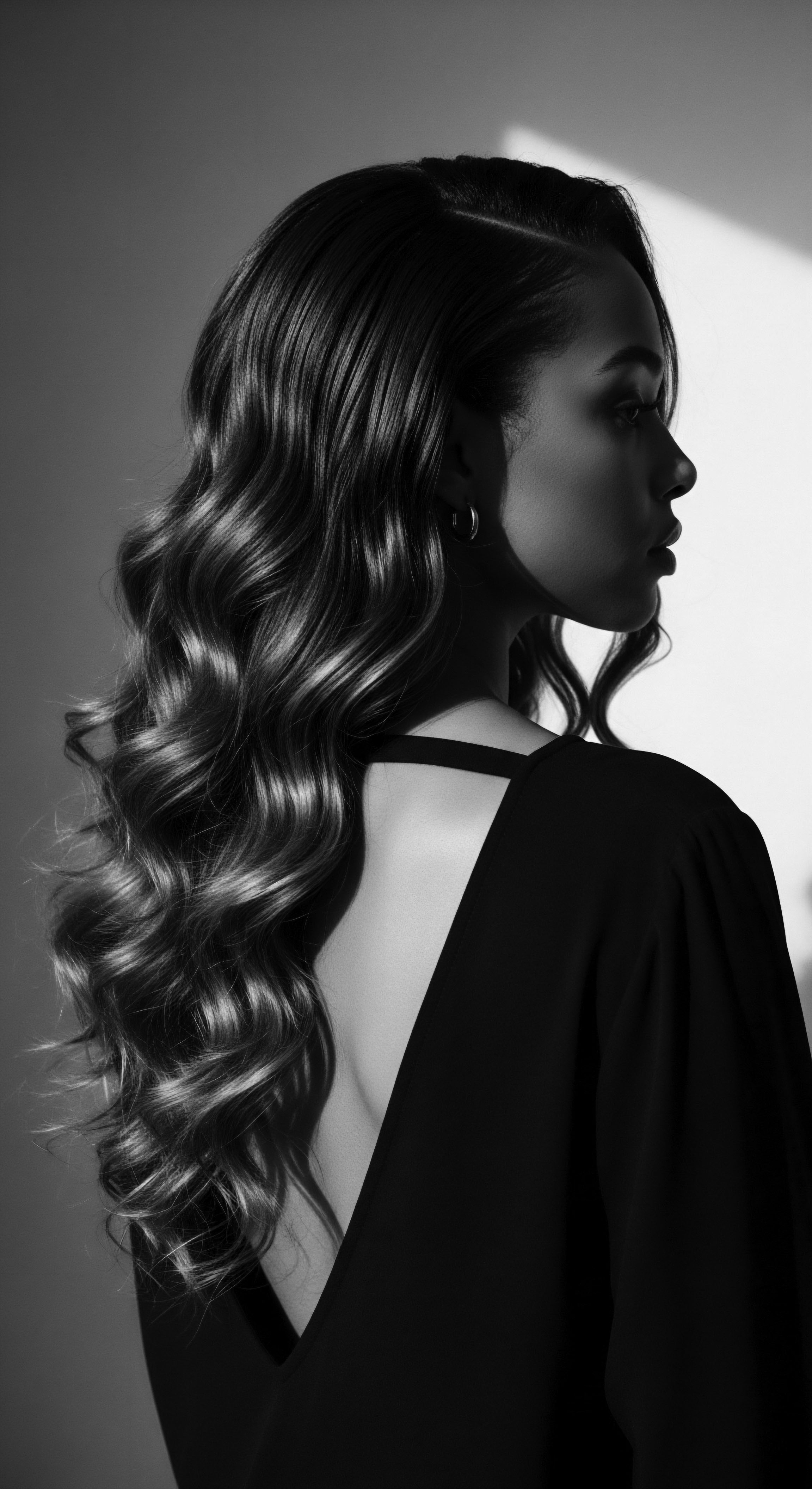
Intermediate
Delving deeper into the Textured Hair Scalp Health reveals a more intricate understanding, one that considers the unique physiological attributes of textured hair types and the environmental, social, and historical pressures that have shaped their care. This intermediate explanation acknowledges that hair care is not merely a superficial act but a profoundly meaningful interaction with one’s biological inheritance and cultural legacy. The term denotes an active state of ecological balance on the scalp, one resilient enough to support the spiraling journey of textured strands from follicle to tip.
The distinct morphology of textured hair follicles, often curved or elliptical, influences the way hair grows and how natural sebum travels along the hair shaft. This structural particularity means that sebum, a natural moisturizer, struggles to distribute evenly down a coiled strand, leaving textured hair and its scalp more susceptible to dryness. Therefore, the specification of Textured Hair Scalp Health at this level encompasses strategies to counteract this inherent predisposition, promoting optimal oil production and consistent moisture delivery to the scalp’s surface and the emerging hair.

The Scalp’s Micro-Ecosystem and Cultural Context
An interpretation of scalp health for textured hair demands a closer look at the scalp’s delicate micro-ecosystem. This intricate community of bacteria, fungi, and other microorganisms plays a significant role in maintaining a healthy environment. Disturbances to this balance, often caused by harsh products, infrequent cleansing, or excessive manipulation, can lead to conditions such as dryness, flaking, or inflammation. The significance of this balance becomes particularly salient when considering traditional hair care rituals, many of which inherently supported a thriving scalp environment through the use of natural, microbiome-friendly ingredients.
Optimal textured hair scalp health navigates the unique biology of coiled strands, advocating for practices that honor ancestral wisdom.
Within the history of Black and mixed-race hair experiences, the care of the scalp has always held communal and symbolic weight. The communal act of hair dressing, often involving meticulous attention to the scalp through oiling and massaging, was more than just grooming; it was a profound act of social bonding, knowledge transmission, and affirmation of identity. These practices, rooted in ancestral wisdom, reveal an implicit understanding of scalp well-being as integral to the overall health and spiritual connection of the individual.
| Traditional Practice Hair Oiling Rituals (e.g. shea butter, coconut oil application) |
| Contemporary Understanding/Benefit Provides emollients and fatty acids, sealing moisture, reducing transepidermal water loss, supporting barrier function. Acts as a gentle cleanser and anti-inflammatory. |
| Traditional Practice Herbal Rinses and Infusions (e.g. hibiscus, rosemary) |
| Contemporary Understanding/Benefit Delivers antioxidants, vitamins, and antimicrobial compounds. Enhances circulation, soothes irritation, and supports follicular health. |
| Traditional Practice Communal Braiding and Styling |
| Contemporary Understanding/Benefit Offers protective styling, reducing daily manipulation and mechanical stress on hair and scalp. Fosters social connection and intergenerational knowledge transfer. |
| Traditional Practice Scalp Steaming/Heat Application |
| Contemporary Understanding/Benefit Opens pores, facilitates product penetration, and promotes circulation. Aids in detoxification and deep conditioning of the scalp. |
| Traditional Practice The enduring wisdom of ancestral hair care practices for textured hair often aligns with and is affirmed by contemporary scientific findings, demonstrating a continuous lineage of care. |
The historical context of hair care for people of African descent, for instance, has always involved a negotiation between preserving inherent texture and adapting to societal pressures. Despite periods of enforced dehumanization, during which hair was shaved or neglected, the resilience of traditional practices persisted. These practices, often conducted in secret or within the intimate confines of family, served not only to maintain physical scalp integrity but also to preserve a sense of self and cultural connection. The elucidation of Textured Hair Scalp Health at this intermediate level recognizes this profound dual purpose.
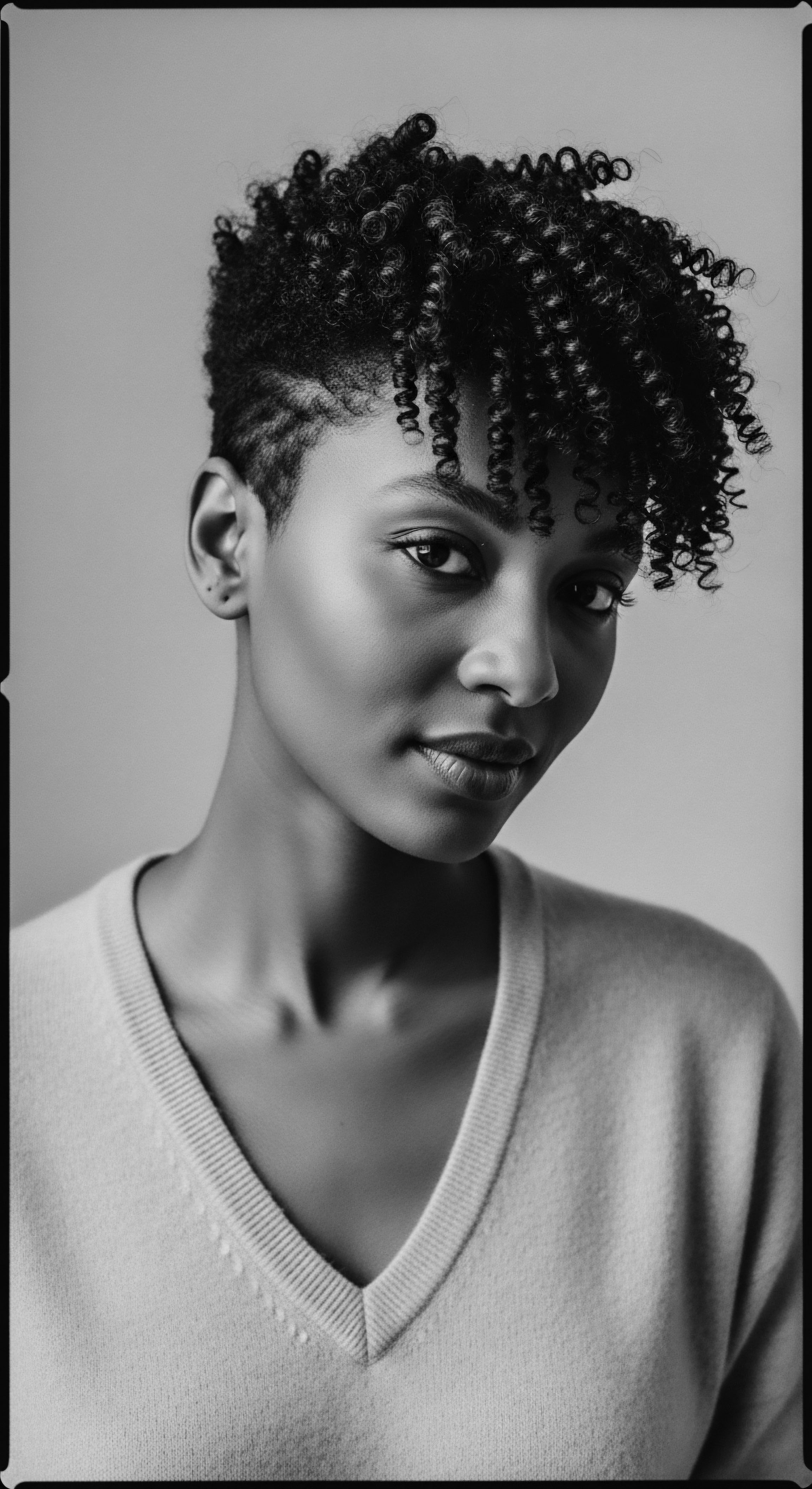
Academic
The academic definition of Textured Hair Scalp Health represents a rigorous, multidisciplinary synthesis, drawing upon trichology, dermatology, cultural anthropology, and socio-historical studies to construct a comprehensive delineation. This conceptualization moves beyond mere absence of pathology to posit an optimal, dynamic equilibrium of the scalp’s cutaneous, follicular, and microbial environments, uniquely tailored to the morphological and physiological specificities of hair with high curl density. Its deeper meaning encompasses the intricate interplay between intrinsic biological predispositions and extrinsic influences, including environmental factors, historical trauma, and enduring cultural practices. The term denotes a state where the scalp tissue exhibits robust barrier function, balanced sebum regulation, unimpeded follicular activity, and a commensal microbiota, all working synergistically to support the structural integrity and growth cycles of coiled, kinky, and wavy hair strands.
Such an academic interpretation demands a nuanced understanding of scalp biology for textured hair, recognizing that the elliptical cross-section of the hair shaft and the unique angle at which it emerges from the follicle render it inherently more susceptible to mechanical stress and desiccation. The spiral nature of the hair means that natural emollients struggle to travel the full length of the strand, contributing to dryness that can extend to the scalp. Therefore, effective Textured Hair Scalp Health strategies must actively mitigate these predispositions. This includes meticulous attention to cleansing regimens that prevent lipid stripping, the judicious application of humectants and occlusives to maintain hydration, and consistent practices that minimize friction and tension at the follicular unit.
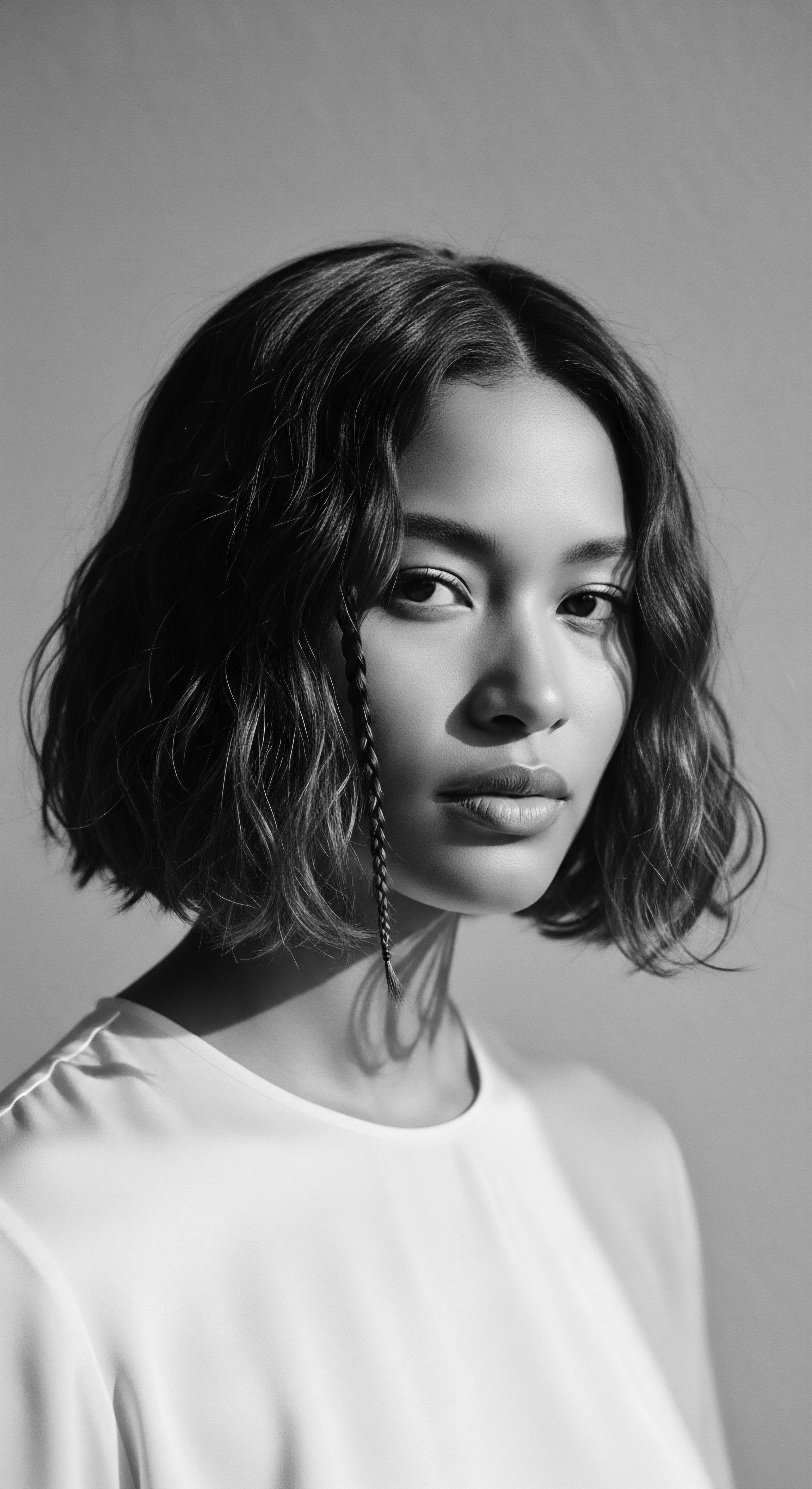
Echoes from the Source ❉ Ancestral Wisdom as a Foundational Text
The historical tapestry of Textured Hair Scalp Health is intricately woven with ancestral practices, particularly those observed within communities of African descent. These practices were not merely cosmetic; they embodied generations of empirical knowledge, responding directly to the biological needs of textured hair while simultaneously serving as vital mechanisms for cultural preservation and communal solidarity. To grasp the full scope of Textured Hair Scalp Health, one must appreciate its deep historical roots, often forged in conditions of immense adversity. The early experiences of enslaved Africans illustrate this vividly.
Upon forced transatlantic passage, their hair was often shaved as a dehumanizing act, a brutal attempt to sever ties to their ancestral lands and identities. Yet, even in the harrowing environment of chattel slavery, the resilience of hair care traditions endured, quietly adapting to new realities.
A deep examination of Textured Hair Scalp Health reveals its inherent connection to cultural continuity and the enduring spirit of Black communities.
A particularly compelling, though often undersung, historical example illuminating the profound connection between Textured Hair Scalp Health and resilience lies in the ingenious use of cornrows by enslaved peoples in the Americas, not only as a stylistic choice but as covert navigational aids. While much attention rightly focuses on the patterns themselves functioning as maps of escape routes or repositories for seeds, the very viability and duration of these intricate styles depended directly on the robust maintenance of the scalp and hair. For these “map braids” to remain intact for the weeks or months required for an escape attempt, the scalp beneath had to be meticulously prepared and cared for, free from irritation, matting, or significant build-up that could compromise the integrity of the braid or cause discomfort that might expose the wearer. The survival of these individuals was, in a very real sense, contingent upon practices that sustained Textured Hair Scalp Health.
Enslaved women, drawing upon generational knowledge passed down through oral traditions, improvised with the limited resources available to them. They used ingredients like butter, bacon fat, or goose grease as emollients, not just to straighten hair as forced assimilation later encouraged, but initially to moisturize and protect the scalp and hair. Kerosene was sometimes employed for cleansing, and cornmeal acted as an abrasive cleanser for the scalp, while fats, oils, and eggs served as conditioning agents. These methods, though crude by modern standards, were life-sustaining interventions.
The ability to keep the scalp healthy enough to support complex, long-lasting protective styles like cornrows was an act of profound defiance and a direct application of ancestral ingenuity. Maintaining scalp integrity prevented painful sores, infections, and premature unraveling of the braids, which would have compromised the secret messages they held. This collective, clandestine practice of hair and scalp care during times of intense oppression speaks volumes about the interwoven physical and spiritual aspects of Textured Hair Scalp Health within the Black experience. It was an act of preserving not just physical well-being, but cultural memory, identity, and the very hope of freedom.
The scholarly consideration of this phenomenon highlights a critical aspect ❉ the implicit understanding of scalp physiology and the purposeful application of available botanicals and emollients, even under duress, to maintain its health. This historical insight underscores the argument that the efficacy of ancestral practices, often dismissed as folklore, warrants rigorous scientific scrutiny. An ethnobotanical survey conducted in Karia ba Mohamed (Northern Morocco) identified 42 plant species from 28 families traditionally used for hair treatment and care, with leaves being the most frequently utilized part. This empirical evidence of traditional knowledge, particularly for anti-dandruff and hair loss remedies, provides a contemporary framework for understanding the deep historical roots of Textured Hair Scalp Health practices.
The designation of “Textured Hair Scalp Health” thus extends beyond biological parameters, encompassing psychological and sociological dimensions. Hair discrimination, stemming from Eurocentric beauty standards rooted in slavery, has historically linked natural textured hair to perceptions of unprofessionalism or unkemptness, forcing many Black individuals to resort to damaging straightening methods that often compromise scalp integrity. The mental and physical health implications of this discrimination underscore the holistic nature of Textured Hair Scalp Health; it is not merely about preventing dermatological conditions but about fostering self-acceptance and resisting internalized biases that can manifest in detrimental hair care practices.
The explication of this term also addresses common dermatological conditions disproportionately affecting textured hair scalps, such as Central Centrifugal Cicatricial Alopecia (CCCA) and traction alopecia. CCCA, a scarring alopecia, is often linked to chronic inflammation and follicular tension from certain hairstyles, while traction alopecia results from consistent pulling on the hair follicle. An academic understanding posits that while these conditions have biological underpinnings, their prevalence within textured hair communities is exacerbated by socio-cultural factors and historical hair care practices often driven by societal pressures rather than health. This is a complex area where genetic predispositions meet environmental stressors and styling choices, demanding a comprehensive, research-backed approach to prevention and intervention.

Interconnected Incidences ❉ The Holistic Continuum of Care
The interconnected incidences surrounding Textured Hair Scalp Health reveal a continuous loop where historical context, cultural practices, and biological realities intersect. The focus must be on fostering an environment that supports the unique needs of the textured follicle, minimizing inflammation, and ensuring robust nutrient supply. The ancestral wisdom, even in its improvisation during times of oppression, implicitly aimed at these outcomes. The traditional communal practices of detangling, oiling, and braiding, while sometimes contributing to tension if not executed properly, also provided the vital social and emotional reinforcement necessary for maintaining hair as a source of pride and identity.
- Physiological Adaptation ❉ The curved nature of the textured hair follicle impacts sebum distribution, necessitating external moisture sources for optimal scalp hydration.
- Biochemical Interactions ❉ The interaction of traditional botanical ingredients with the scalp’s microbiome can either support or disrupt its delicate balance, influencing overall health.
- Sociopsychological Impact ❉ The historical pressure to conform to Eurocentric beauty standards has led to styling practices that inadvertently compromise scalp health, highlighting the psychological dimension of hair care choices.
- Environmental Stressors ❉ Climate and environmental conditions, coupled with access to resources, have shaped ancestral practices, with protective styles and natural oils often employed to shield the scalp from harsh elements.
Therefore, the long-term success insights concerning Textured Hair Scalp Health lie in acknowledging this continuum. It involves a critical examination of traditional practices, discerning which elements align with modern scientific understanding for their protective and nourishing properties, and which may inadvertently contribute to issues like traction alopecia. An expert perspective does not dismiss ancestral methods but seeks to understand their underlying mechanisms and adapt them for contemporary application, always with profound respect for their cultural origins.
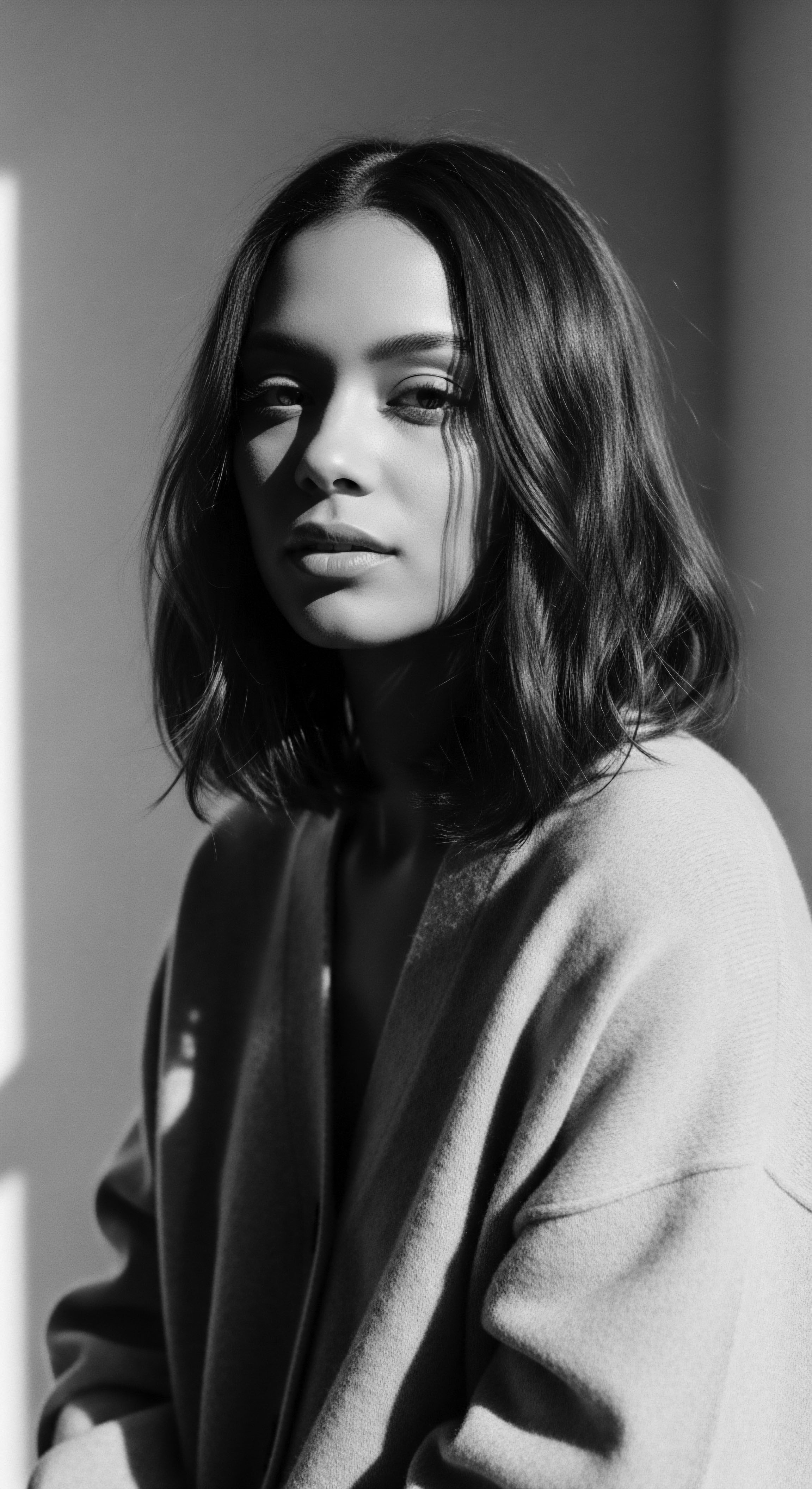
Reflection on the Heritage of Textured Hair Scalp Health
The journey through the meaning of Textured Hair Scalp Health reveals itself as a profound meditation on interconnectedness—of past and present, biology and belief, individual and community. It is a concept not merely confined to dermatological parameters but one that extends its roots deep into the sacred soil of heritage. The care of textured hair, and by extension, its scalp, has always been an intimate act of dialogue with one’s ancestral lineage, a quiet yet powerful affirmation of identity in a world often seeking to erase it.
From the communal circles where hands meticulously braided stories into strands, to the resourceful adaptations born of necessity and resilience in the face of bondage, the vitality of the scalp has remained a constant thread. It is a testament to the enduring wisdom of Black and mixed-race hair traditions that practices centered on scalp health, often employing natural ingredients and tender methods, have persisted through generations. These practices, once born of intuitive understanding, now find validation in scientific inquiry, creating a harmonious confluence of ancient wisdom and contemporary knowledge.
This continuous care, this tender tending to the very source of our hair, is more than routine; it is ritual. It is a way of honoring the sacrifices and ingenuity of those who came before us, ensuring that the legacy of strong, healthy, and culturally significant textured hair continues to flourish. The unbound helix of our hair, spiraling heavenward, carries within its very structure the whispers of our forebears, a living archive of struggle, survival, and profound beauty. To nurture the Textured Hair Scalp Health is to engage in an act of reverence, contributing to a vibrant future that cherishes every unique coil and curl as a sacred part of its living, breathing heritage.

References
- Byrd, Ayana, and Lori Tharps. Hair Story ❉ Untangling the Roots of Black Hair in America. St. Martin’s Press, 2001.
- Dube, Faith, et al. “Cosmetopoeia of African Plants in Hair Treatment and Care ❉ Topical Nutrition and the Antidiabetic Connection?” MDPI, 2024.
- Mouchane, Mohamed, et al. “Ethnobotanical Survey of Medicinal Plants used in the Treatment and Care of Hair in Karia ba Mohamed (Northern Morocco).” Journal of Medicinal Plants and By-products, vol. 13, no. 1, 2023, pp. 201-208.
- Okereke, Ifeyinwa N. and Ifeyinwa M. Okereke. “What Every Dermatologist Must Know About the History of Black Hair.” Clinics in Dermatology, vol. 41, no. 6, 2023, pp. 915-922.
- Owusu, Edward, et al. “Cornrow ❉ A Medium for Communicating Escape Strategies during the Transatlantic Slave Trade Era ❉ Evidences from Elmina Castle and Centre for National Culture in Kumasi.” International Journal of Scientific and Research Publications, vol. 13, no. 5, 2023.
- Rodrigues, Luciana, et al. “Black women’s hair ❉ the main scalp dermatoses and aesthetic practices in women of African ethnicity.” Anais Brasileiros de Dermatologia, vol. 86, no. 3, 2011, pp. 581-584.
- Shaw, G. N. “The Person Beneath the Hair ❉ Hair Discrimination, Health, and Well-Being.” Frontiers in Public Health, vol. 11, 2023, p. 1198595.
